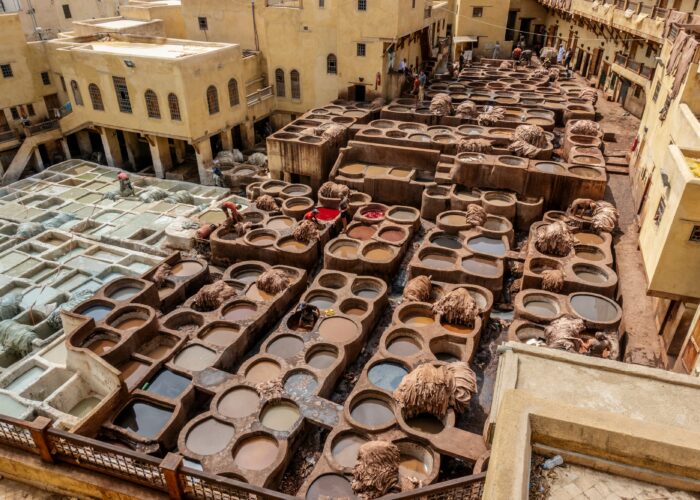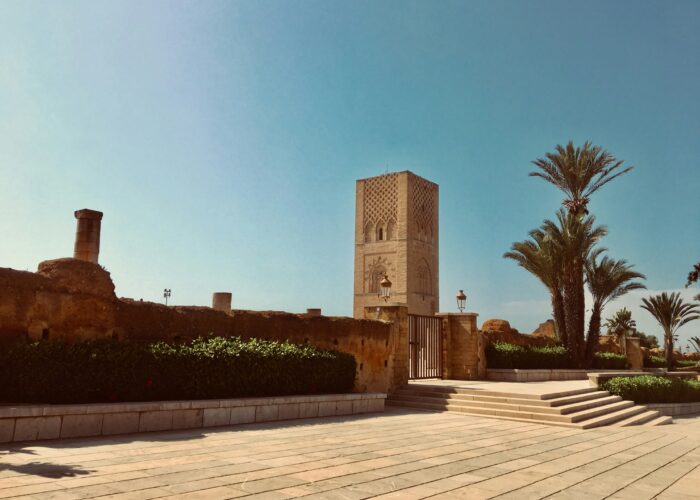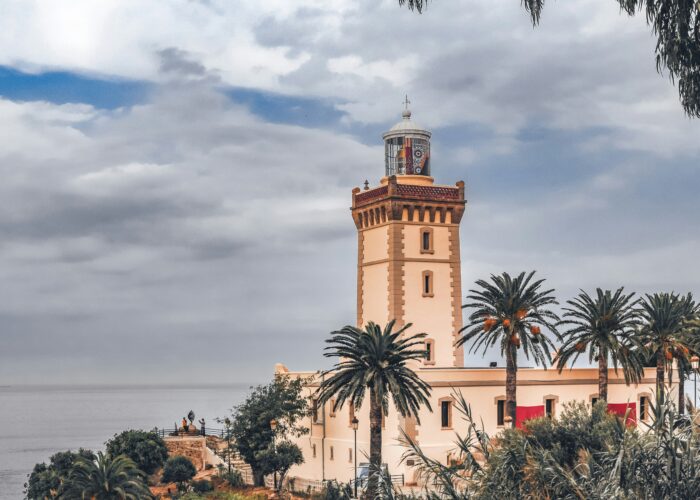Introduction to Moroccan Mint Tea
Moroccan mint tea, also known as “atay,” is more than just a beverage; it is a cherished symbol of hospitality and a central element in the cultural identity of Morocco. This aromatic infusion is prepared using green tea, fresh mint leaves, and sugar, creating a refreshing drink that is served at various occasions, from casual gatherings to formal celebrations. The ritual of serving mint tea reflects the warmth and generosity of Moroccan society, where hospitality is deeply rooted in tradition.
The origins of Moroccan mint tea can be traced back to the 18th century when green tea was introduced to Morocco via trade routes. Initially, the tea was typically consumed plain, but over time, the addition of mint and sweeteners became popular, resulting in the vibrant blend that is celebrated today. Mint tea is not merely a drink; it is an experience, often shared among family and friends, fostering social ties and communal bonding.
The Rituals of Preparing Moroccan Mint Tea
Brewing Moroccan mint tea is more than just a culinary process; it encapsulates a rich cultural tradition that is both an art and a form of social engagement. At the heart of this ritual lies the essential ingredient: green tea, traditionally from the Gunpowder variety, which pairs harmoniously with fresh mint leaves and sugar. The selection of mint is crucial, as it should be vibrant and aromatic, often sourced from local markets to ensure freshness. The preparation begins with boiling water in a teapot, commonly made of metal, which is often adorned with intricate designs reflecting Moroccan artistry.
To begin, a generous amount of green tea is placed in the teapot, followed by boiling water. This first infusion is usually discarded; its primary purpose is to cleanse the leaves and release excess bitterness. The next step involves adding fresh mint, which not only flavors the tea but also contributes to its iconic scent. Subsequently, sugar is added according to personal preferences, although it is customary to make it sweet. The tea must then be brewed, allowing time for the ingredients to meld, creating a fragrant and appealing beverage.
The pouring technique, pivotal in a Moroccan tea ceremony, is an art form in itself. The tea is traditionally poured from a height, which aerates the beverage, ensuring a frothy top that enhances the drink’s visual appeal. This method also allows for the even distribution of mint leaves and sugar. In various regions of Morocco, these rituals may vary slightly, reflecting local customs and preferences. The table below summarizes key differences in preparation styles across regions, highlighting unique etiquette norms that accompany the serving of this beloved drink.
Incorporating these rituals into your own tea preparation will not only improve your brewing skills but will also offer a glimpse into the vibrant culture of Morocco. For visual learners, a video script will be prepared to showcase these pouring techniques typically observed within Moroccan homes and tea houses.
Cultural Etiquette and Local Variations
The preparation and consumption of Moroccan mint tea are steeped in rich cultural etiquette that reflects the country’s traditions and social norms. This beloved beverage is more than just a drink; it is a symbol of hospitality and community. The method of serving mint tea often involves a theatrical pouring technique where the tea is poured from a height into small glasses, creating an impressive foam on top. This practice is not merely for show; it signifies the skill and care of the host, emphasizing the importance of presentation in Moroccan culture.
When visiting a Moroccan home or tea house, it is customary for the host to offer tea to guests as a warm welcome. Refusing the tea can be viewed as impolite. Guests are generally expected to accept at least one glass, and it is common for personal preferences regarding sweetness to be acknowledged. Each guest can indicate their preferred level of sweetness before the tea is prepared, allowing for a personalized experience. Furthermore, the act of drinking is often accompanied by dynamic conversations, making the tea-drinking ritual an essential communal affair that strengthens social bonds.
Sustainable Tea Sourcing and Final Thoughts
Sustainable sourcing practices are crucial in the production of Moroccan mint tea, which not only influences the quality of the beverage but also supports local communities and the environment. The cultivation of mint and green tea primarily occurs in organic farms, where farmers adopt eco-friendly methods. This organic approach not only protects the soil and water resources but also ensures that the consumers receive a product that is free from harmful pesticides and chemicals. Supporting these farms reinforces ethical trade practices and promotes biodiversity.
When traveling in Morocco, tourists can enjoy their mint tea responsibly by choosing to purchase from certified organic producers or local markets that uphold sustainable practices. Engaging with local artisans and participating in tea ceremonies offers an authentic experience and helps sustain the local economy. Furthermore, by seeking out businesses that prioritize ethical sourcing, visitors contribute positively to the communities that have maintained this rich cultural tradition for generations.
As cultural experts highlight, the future of Moroccan mint tea lies in its ability to adapt and thrive amidst changing environmental and consumer trends. Efforts to promote organic cultivation could ensure the heritage of Moroccan tea persists while meeting global demand. By fostering deeper appreciation for the cultural significance of this drink, not only will tourists find joy in its flavors, but they will also understand its role in Moroccan society.
In addressing common queries, many visitors wonder how to drink mint tea in Morocco. Observing local etiquette, such as waiting for the host to pour the first cup, enhances the experience. It is also customary to accept the tea with a simple ‘shukran’ (thank you) and to savor the flavor rather than rush through the ritual. Overall, engaging with this tradition in a responsible manner enriches the understanding of Moroccan culture.
Readers are encouraged to explore the art of Moroccan mint tea and embrace its significance. By being mindful of sustainable practices, everyone can contribute to preserving this cherished tradition for future generations.























